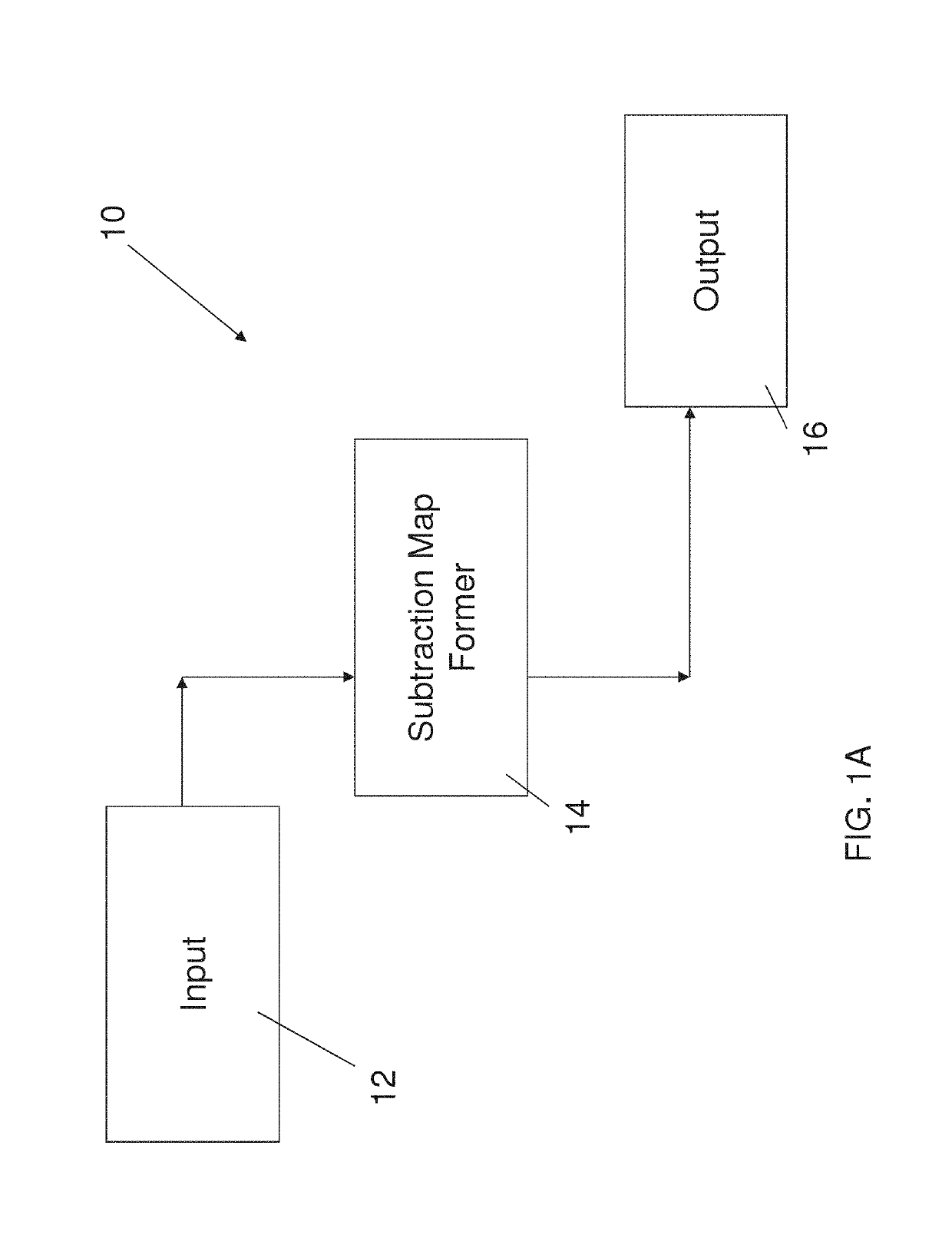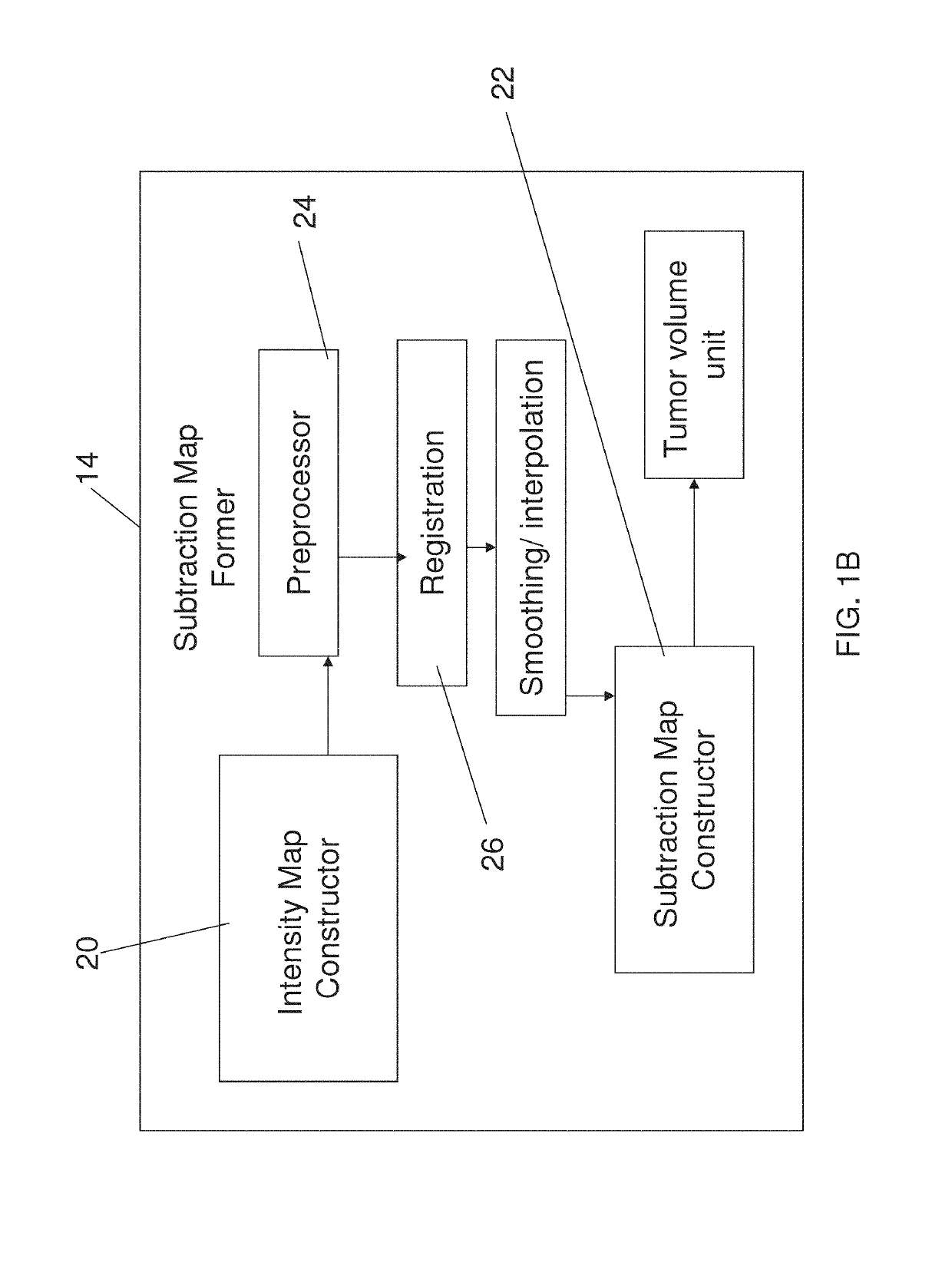Magnetic resonance maps for analyzing tissue
a magnetic resonance map and tissue technology, applied in the field of magnetic resonance map, can solve the problems of limiting the validity of a progression free survival end point, premature discontinuation of effective adjuvant therapy, and inability to reliably distinguish between tumor progression and treatment effects of conventional magnetic resonance map, and achieve high resolution and depiction. high
- Summary
- Abstract
- Description
- Claims
- Application Information
AI Technical Summary
Benefits of technology
Problems solved by technology
Method used
Image
Examples
example 1
[0142]Patients and Treatment:
[0143]Twelve patients with histologically confirmed glioblastoma (World Health Organization [WHO] grade IV astrocytoma) were recruited. Eleven with newly diagnosed GBM and one patient with secondary GBM, two years after resection of an Anaplastic Astrocytoma (WHO grade III tumor). All patients received the standard radiotherapy of 60 Gy in thirty daily fractions, five days a week, with concomitant daily temozolomide of 75 mg / m2 for forty two days. Chemoradiation was followed by six cycles of adjuvant temozolomide of 150-200 mg / m2 daily for five days every twenty eight days. Three patients were recruited prior to surgery and nine after completion of the chemoradiation treatment. The mean age was 50.7±3.7 with a range of 27-71. Nine of the twelve patients were men.
[0144]Inclusion criteria included patients with WHO performance status of 2 or less and adequate hematologic, renal, and hepatic function. Exclusion criteria included contraindications to MRI and...
example 2
[0189]An application of the present embodiments comprises high resolution depiction of brain tumors after treatment with anti-angiogenic treatments and studying the mechanism of action and response patterns of such drugs.
[0190]Standard Treatment:
[0191]Glioblastoma multiforme (GBM) is the most common and most aggressive type of high grade glioma and is associated with a median survival of less than 15 months. In 2005, a randomized phase 3 trial demonstrated that the addition of temozolomide (TMZ) to adjuvant radiation therapy was associated with an improvement in the median survival of patients with newly diagnosed GBM from 12.1 months to 14.6 months [1]. This treatment regimen is currently the standard of therapy for newly diagnosed GBM, and is commonly referred to as the “Stupp protocol”.
[0192]Anti-Angiogenic Treatments:
[0193]Nearly all GBM recur after initial therapy, and most patients do not survive beyond 1 year after the diagnosis of recurrent disease. Because re-operation and ...
example 3
[0271]The present embodiments were used in high resolution depiction of brain metastases and other brain disorders after treatment with radiosurgery or other radiation-based treatments for differentiation between tumor progression and radiation necrosis, and in application of high resolution delayed extravasation MRI for differentiation between progression of brain Space occupying lesion (SOL) and treatment effects following radio-surgical treatment.
[0272]Patients and Treatment:
[0273]32 patients are used in the study, 15-75 years of age, post radio surgical treatment of 18-20 Gy targeting a brain SOL with follow up MRIs that may be related to tumor progress or treatment effects. The patients are divided into the following 4 groups:
[0274](1) 6-8 patients with suspected SOLs (brain metastases, AVMs, primary brain tumors or meningiomas) progression,
[0275](2) a control group of the same number (6-8) of patients with similar pathologies who underwent a radio surgical treatment within a s...
PUM
 Login to View More
Login to View More Abstract
Description
Claims
Application Information
 Login to View More
Login to View More - R&D
- Intellectual Property
- Life Sciences
- Materials
- Tech Scout
- Unparalleled Data Quality
- Higher Quality Content
- 60% Fewer Hallucinations
Browse by: Latest US Patents, China's latest patents, Technical Efficacy Thesaurus, Application Domain, Technology Topic, Popular Technical Reports.
© 2025 PatSnap. All rights reserved.Legal|Privacy policy|Modern Slavery Act Transparency Statement|Sitemap|About US| Contact US: help@patsnap.com



